This piece contains major spoilers for 28 Years Later
A monstrous figure looms over a child. It is unfathomably, inhumanly big, and the child can only stare in helpless wonder and terror. From dark corners emerge other monsters. The child is surrounded and unable to escape. At the apex of the horror, help comes from the sky; an army descends and the monsters cower and retreat. The child is safe, and all is well. She returns to her bed, where she will dream of a safer world. This scene forms part of the epic spectacle Isles of Wonder, better known as the opening ceremony of the 2012 London Olympics. The monsters are all literary – the huge figure is Voldemort, flanked by the Child Catcher and Cruella De Vil – and the cavalry are an improbable band of Mary Poppins, shooing the monsters away with their umbrellas.
The 2012 opening ceremony has become something of a cultural lodestone in the UK over the last decade. Its display of national unity, diversity and heritage has made it a benchmark for centrist liberals who, throughout one of the worst decades the country has experienced in modern times, reeling from the one-two punch of Brexit and the appallingly handled response to the Covid pandemic, see in it some kind of prelapsarian land, one that existed before and can again. This fetishisation of the 2012 opening ceremony has also drawn heavy criticism from others who remember that this moment of supposed unity occurred three years into a devastating governmental policy of austerity that would decimate – and still does –public services and support for all UK citizens. The Brexit referendum four years later gave the lie to the idea that in 2012 we were all in it together, to paraphrase the vapid slogan of then Chancellor George Osborne, who was publicly booed in the Olympic stadium.
Voldemort and the Poppins army at the 2012 London Olympics opening ceremony
What centrists see in the 2012 Olympics is a powerful fiction of Britishness, one that sporadically recurs in the culture and one that, so the story goes, existed before social media and Brexit brought the rabid ugliness of some elements of the country to light. Never mind that there were army snipers situated on residential tower blocks, or that local businesses had been uprooted in favour of corporate sponsors – the symbolism of that opening ceremony papered over a multitude of cracks. Among speakers that included James Bond, Mr Bean, The Queen and JK Rowling (whose horrendous post-Olympics trajectory is another, if not entirely separate, story) was Kenneth Branagh dressed as Isambard Kingdom Brunel – a figure at that time inexplicably popular with the British public – delivering Caliban’s lines from The Tempest – “Be not afeard; the isle is full of noises”.
The director of this spectacular was Danny Boyle, highly regarded for his vision of contemporary Britain in Trainspotting, and a recent Oscar winner with Slumdog Millionaire. Boyle is famous for his fast-and-loose visual style, with rapid cuts and incongruous music cues; a kaleidoscopic pop vision of the nation, making him a perfect choice for the Olympics. Boyle is unusual in that while elements of his work have been hugely influential – the freeze-frames, music choices and hell-for-leather narration were lifted wholesale for a whole generation of British crime movies in the late 90s, chief among them Lock, Stock and Two Smoking Barrels – his style is just too idiosyncratic to fully copy. His films often look – deliberately – like visual decisions were made on the fly: a sudden slo-mo here, a different lens there, a new colour grade here, a different film stock there. They’re purposefully messy. His films are influenced as much by the kind of quick-cut psychedelic reel you might have seen projected on a wall in the Hacienda in 1988 as by other filmmakers. This club/acid house aesthetic to Boyle’s work has remained, and in recent years has started to take on an uncanny quality in its untimeliness.
This spontaneous, loose style found an apex of sorts in 2002’s 28 Days Later, in which a virus sweeps across the UK, rendering its victims violent, rage-filled lunatics. The film was shot on the Canon XL1 digital camera and looks deliberately cheap. The rough and ready, heavily pixilated quality is perfect for a film about the breakdown of social structure, just the kind of tool one might film an apocalypse with. It’s not that this aesthetic lends the film a realism; it’s far too self-conscious a visual decision for that. It lends the film a fundamental unrealism, a sense that something is wrong with the picture, that things have been degraded, broken down.
Pixilated apocalypse: 28 Days Later
Though it’s not much mentioned now, much of the imagery in the first half of 28 Days Later was lifted directly from the events surrounding the 9/11 attacks the previous year. In the empty London where the film opens, pictures of missing people are stuck en masse to a wall as a hybrid memorial and plea for information. Anyone watching this in 2002, as I did, would have immediately thought of identical images from Ground Zero in New York City, where similar displays proliferated. 28 Days Later was also released six months before the British and American invasion of Iraq, and the portrayal of the British armed forces – depicted as a bunch of rapists led by a demagogue warlord – is far from sympathetic. The film is reactive, then, to a recent sense of sudden disaster and its long tail.
When it was announced that Boyle was to return to direct 28 Years Later, a second sequel – the less said about 2007’s atrocious 28 Weeks Later, which Boyle did not direct, the better – there was an obvious timeliness. In the interim, the UK had experienced a deadly virus that swept the country and the world, shutting people in their houses, killing millions, breaking families apart and denying people the chance to say goodbye to their dying loved ones. Concurrent with the sweep of the virus was another pandemic: misinformation, anger, bigotry and xenophobia, as well as justified fury at a government who left scores of its citizens to die through incompetence and corruption. 28 Days Later had come true after a fashion, except that the disease was bifurcated – one pandemic killed people, another consumed the survivors with rage. The pandemic arrived mere weeks after one of the most rancorous episodes in British political history: the passage of the government’s Brexit bill through parliament. Brexit, probably the biggest domestic political disaster any living UK resident has, or hopefully will, witness, is now so toxic that no politician will mention it in fear of the rage of the Little Englanders and the shock troops of the British press. The isle is full of noises indeed; incoherent fury chief among them. The second pandemic, like the first, has become endemic.
A glance at the premise of 28 Years Later suggests that Boyle and screenwriter Alex Garland have been thinking on this. The film is set nearly three decades into the pandemic, on a small island cut off from the mainland and barricaded against the monsters from across the water. Life has returned to a 1950s-inspired medievalism – British imagery including post boxes and pubs is present and correct – in which everyone seems happy and content to bond together, to keep calm and carry on. The island is oddly uncharacterised in the film: we have little understanding of how it operates, its politics, who runs it, who dissents. It has more in common with Balamory, or indeed Isles of Wonder, than The Tempest. It’s such a readymade metaphor for contemporary Britain – cut off, obsessed with a past that never existed, fearful of anything outside, running on scarce supplies – that it’s strange the film doesn’t seem interested in it.
The film’s principal conflict is limited to the house where the protagonists live: Jamie (Aaron Taylor-Johnson), his 12-year-old son Spike (Alfie Williams), and his wife Isla, played by Jodie Comer (‘Spike Isla’ – you can take the Boyle out of the late 80s etc). Isla is confined to bed with some unspecified neurological illness, and she hallucinates and curses, losing track of time and generation. Mother England, rotting away from the inside in the bed upstairs, lost in the past: it’s a potent image, but Comer is sidelined for most of the film’s first half as Taylor-Johnson and Williams go out to the mainland as part of Spike’s initiation into manhood, where he will be required to kill infected with the islanders’ weapon of choice, the bow and arrow.
I found the film’s first hour, which feels like a retread of Cormac McCarthy’s The Road, a frustrating and often incoherent experience. Boyle’s trademark editing style doesn’t allow us the environmental situating we need early on: cuts come roughly every 5 seconds, with angles constantly dutched and accompanied by unrelated cutaways. As the father and son leave the island, we hear the reading of ‘Boots’ which soundtracked the film’s trailer. But why are we hearing it? And why are there cut-ins of stock footage of World War 2 and inserted shots from Olivier’s Henry V? We haven’t yet understood how the island operates, so we don’t know if these military cut-ins are supposed to be ironic or sincere, or somewhere in-between. It’s as if the film is desperately trying to communicate a subtext, but there’s no breathing space to allow a subtext to exist. It’s an antic, uncertain style when what the viewer needs is clarity of vision and geography. Underpinning this is a script frustratingly plagued with narrative inconsistency. Spike expertly shoots a zombie in the neck from a distance, but five minutes later he can’t bring himself to do the same. Humans, we are told, can’t exist for long in the open of the mainland, but later we see evidence that they are doing just that. The pathway that separates the island from the mainland is supposedly impregnable, but half an hour later a zombie crosses it with ease.
It’s also, in the post-pandemic era, difficult to envision that, as only the UK has been affected by the virus, the rest of the world has simply given up and left the country to its own devices. This might make for a handy metaphor, but it’s impossible to suspend belief. In 28 years, why has the world not shown any interest in the pathology of the virus, or a vaccine? Later, some members of the Swedish navy are washed up on the mainland. They are patrolling the British coast – but why, if the country has been abandoned? And don’t the islanders want to be rescued? With constant navy patrols, it would clearly be easy to do so. If the islanders want to stay, that makes perfect sense and bolsters the post-Brexit, post-pandemic subtext – this is our hell and we’re happy in it. All you need is a sense of the culture of the island. But we don’t get it, and therefore we can’t get a grip on anyone’s motivation.
When the film slows down, it improves immensely. An early scene in which Spike and Jamie see an ‘Alpha’, an unusually big and strong zombie, silhouetted by a tree as it stalks them, brings home some of the uncanniness that made 28 Days Later so compelling. It does so because we’re allowed to stop and look at it. Said Alphas are tall, muscular, have darker complexions and huge prosthetic penises. The earlier zombies shot by Spike are of a slower kind, obese and crawling, and are played by East Asian actors. This is surely deliberate – the racializing of the zombies, and the comparative lack of any people on the island who aren’t white, would appear to be a gesture, if a crude one, towards the monsterising of the outsider, the grotesque and exaggerated bodies that exist in the mind of the xenophobe and the racist islander. But again, we come up against the problem that the politics of this world, so potentially rich, is so lightly sketched. As a result, these racialised monsters are simply rendered grotesque and scary, with the obvious attendant problems that arise from that.
Instead, the first half of the film is more preoccupied with its formal tools than character or scenario. A great deal of effort has gone into the much-discussed multi-iPhone rig that creates a crude bullet time effect when zombies are killed, but this adds nothing that we haven’t seen. And what is the value of using bullet-time – a quarter-century old technique – anyway? Much has also been made of the fact that the film was shot on an iPhone, but Anthony Dod Mantle – a great, inventive cinematographer whose work with Dogme 95 clearly influenced his work on 28 Days Later – is something of a victim of his own influence here. The rapidly closing window between picture quality on phones and digital cameras means that there’s nothing like the uncanny pixilated effect of 28 Days Later here – in fact, now that action films are using drones and Go-Pros as a matter of course, the film isn’t visually distinct enough to feel different on look alone. That’s not to say there isn’t some interesting looking stuff here – I’ve always enjoyed the lurid, gangrenous shade of digital green that Mantle brings out of rural environments, and here it’s pushed even further, a green unpleasant land that lies somewhere between the look of 90s VHS-C/Hi8 videotape and the three-strip Technicolour of Powell and Pressburger, whose visualisations of Britain continue to influence 21st century directors such as Joanna Hogg and Ben Wheatley. But the first half of 28 Years Later is just too choppy and restless for any of this aesthetic to sink in or settle.
28 Years Later’s much-vaunted iPhone camera rig
Thankfully, the second half is a huge improvement, and unsurprisingly this happens when the film slows down and allows the actors space to work. The second half of the film foregrounds the relationship between Comer – who gives a much more even performance than Taylor-Johnson – and Williams, and intertwines their story with that of a mysterious doctor who lives on the mainland, and who Spike hopes can diagnose and cure his mother. The stakes of the film narrow considerably, and after the messy first half there’s a focused sense of character and scale. In an odd coincidence, the doctor is played by Ralph Fiennes, who will be known to a significant percentage of the audience as Voldemort; there’s a pleasing parallel in how Boyle’s Manichean spectacle at the Olympics – the bad guys chased away, the children saved by British icons – is inverted here (in fact, the opening scene of the film, which depicts the slaughter of a group of children watching great British export Teletubbies, seems like a macabre wink to that opening ceremony; don’t forget we’re in a very different Britain now). The film asks us to sit with some ambivalence over Fiennes’ character, who has built an entire structure out of human bones, including a huge pyramid of skulls, and who was earlier glimpsed laying out bodies in the manner of a wartime massacre, but who is sympathetic to the boy and his mother. These scenes are, by some distance, the best in the film, and they involve the kind of stasis and human drama, and a sense of the land – the rootedness – which was so absent in the first half.
When it becomes clear that Comer is terminally ill, Fiennes offers to euthanise her, leading her away from Williams into the darkness. Subsequently, he returns holding her skull – which has been burned clean in his makeshift brazier – and hands it to her son. I found this scene, and the uncanny rapidity with which Comer is transformed offscreen from living person into memento mori, extremely moving. It’s one of the film’s clearest nods to the Covid pandemic, where the bereaved were unable to see those they loved in their final moments and were instead presented abruptly with their remains. It seems inexplicable that the skull was Comer mere minutes ago, and that’s the point – death becomes yet more uncanny when we aren’t allowed the proper process of mourning (I was reminded of the extraordinary scene in Jane Campion’s In The Cut in which Nicole Kidman discovers her sister’s severed head and grabs it instinctively to her chest, her sense of prevailing love defying the grotesquerie of human remains). Spike climbs the pyramid and places his mother’s skull on the top as the sun rises on the cursed land; it’s a tender and desperate moment. The temple of human bones, in this moment, is transfigured from gruesome spectacle to site of remembrance. As with the post-9/11 collage of the dead and missing in 28 Days Later, this can’t help but recall the Covid memorial wall of hearts in London, or the sea of white flags in Washington DC. Boyle is tapping into something very potent here: Britain is not over the pandemic, and it’s not over Brexit and the blind rage that it unleashed. Rather than an island full of noises, it’s an island that cannot fully vocalise the trauma that it has been through and continues to go through. As of now, it feels like the only British film that has fully tried to reckon, albeit abstractly, with what the country has experienced.
Post-pandemic memorials - the bone temple (above) and the covid memorial wall
And then, the final scene. Having reckoned with one kind of British trauma, the film abruptly invokes another. Spike, alone and wandering the mainland, encounters a cult of teenagers led by a man calling himself Jimmy. The name, and their outfits – blonde wigs and tracksuits – have an obvious referent: Jimmy Savile, likely the most prolific sex offender in British history, friend of royals and prime ministers, abuser of children, men, women, the elderly and – if the rumours are to be believed – the dead. No Mary Poppins were at hand to save Savile’s victims, who were roundly disbelieved and silenced until after his death. Of course, in the film’s timeline, where the virus struck in 2002, Operation Yewtree never took place and Savile’s reputation was never overturned. Evoking Savile this directly is a breathtakingly bold – some might say foolhardy – decision. Savile, whose crimes were made public just weeks after the 2012 Olympics opening ceremony, and who in previous decades may conceivably have been a part of it, is the closest thing that contemporary Britain has to a folk devil, and his history has become so entwined with British politics and misinformation – the photo-ops with Thatcher, the lies repeated by Boris Johnson at the dispatch box about Keir Starmer’s failure to prosecute Savile – that evoking his image in a film is fraught with potential problems. The Savile cult, it is implied, will be central to the next film. The only posthumous evocations of Savile in the media have been heavily stage-managed dramas about his crimes – to bring him into a zombie franchise is to risk accusations of glibness. But conceptually there is something here; a series of films that reckon with the unspoken horrors of 21st century Britain, in which mass death, rage, xenophobia and untouchable cult figures has wrought deep, possibly irrevocable divisions across the nation, with no clear dawn in sight. Can Boyle and Garland pull it off? The unevenness and crudeness of much of 28 Years Later puts this somewhat in doubt. But if the films are really committed to engaging with this, we could have something fascinating, an anti-Isles of Wonder that goes to the nation’s darkest places, where the monsters are not chased away but faced and reckoned with.




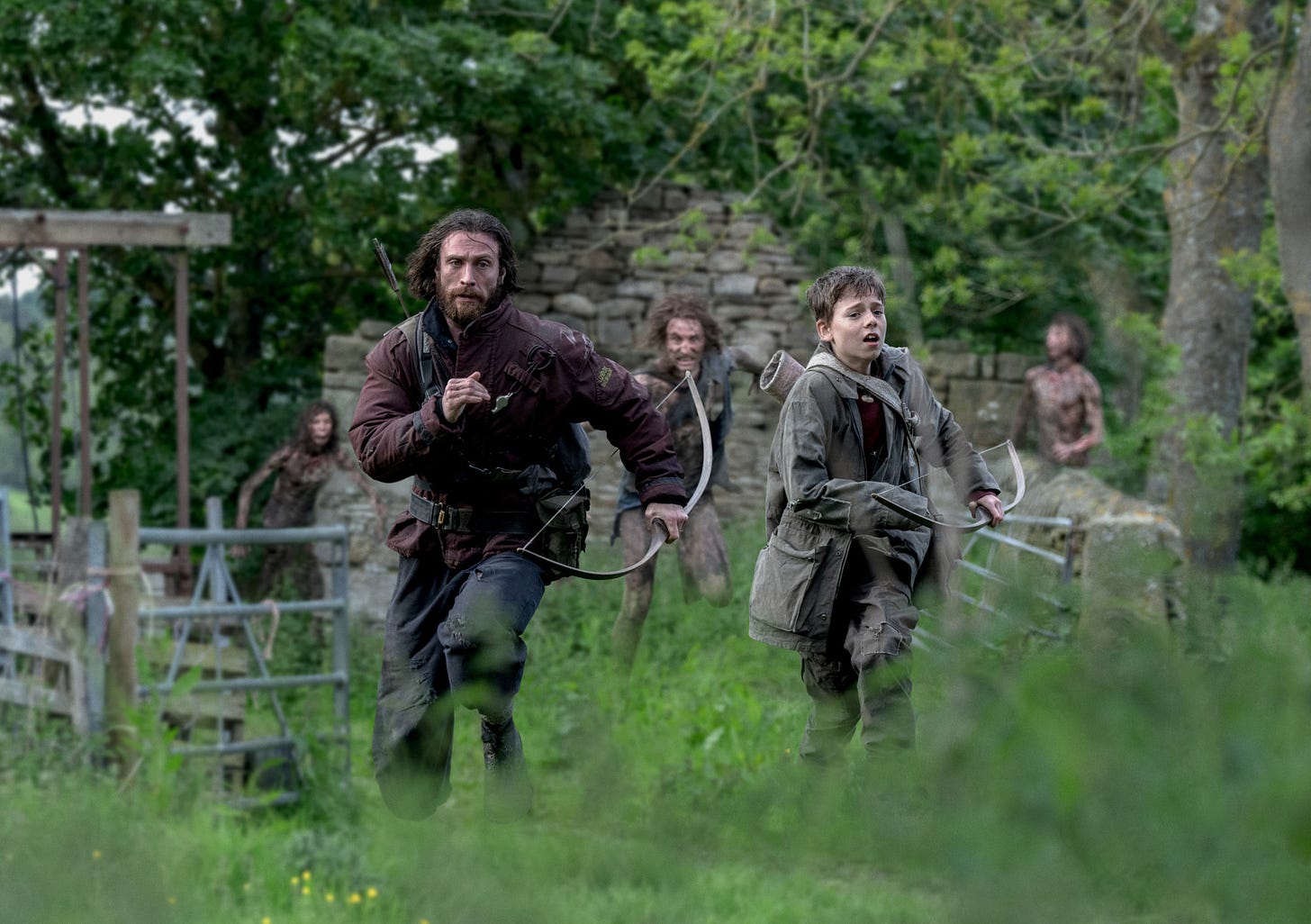
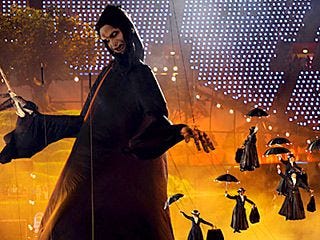
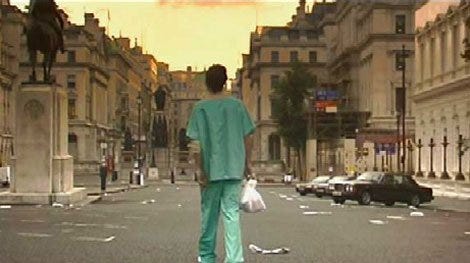
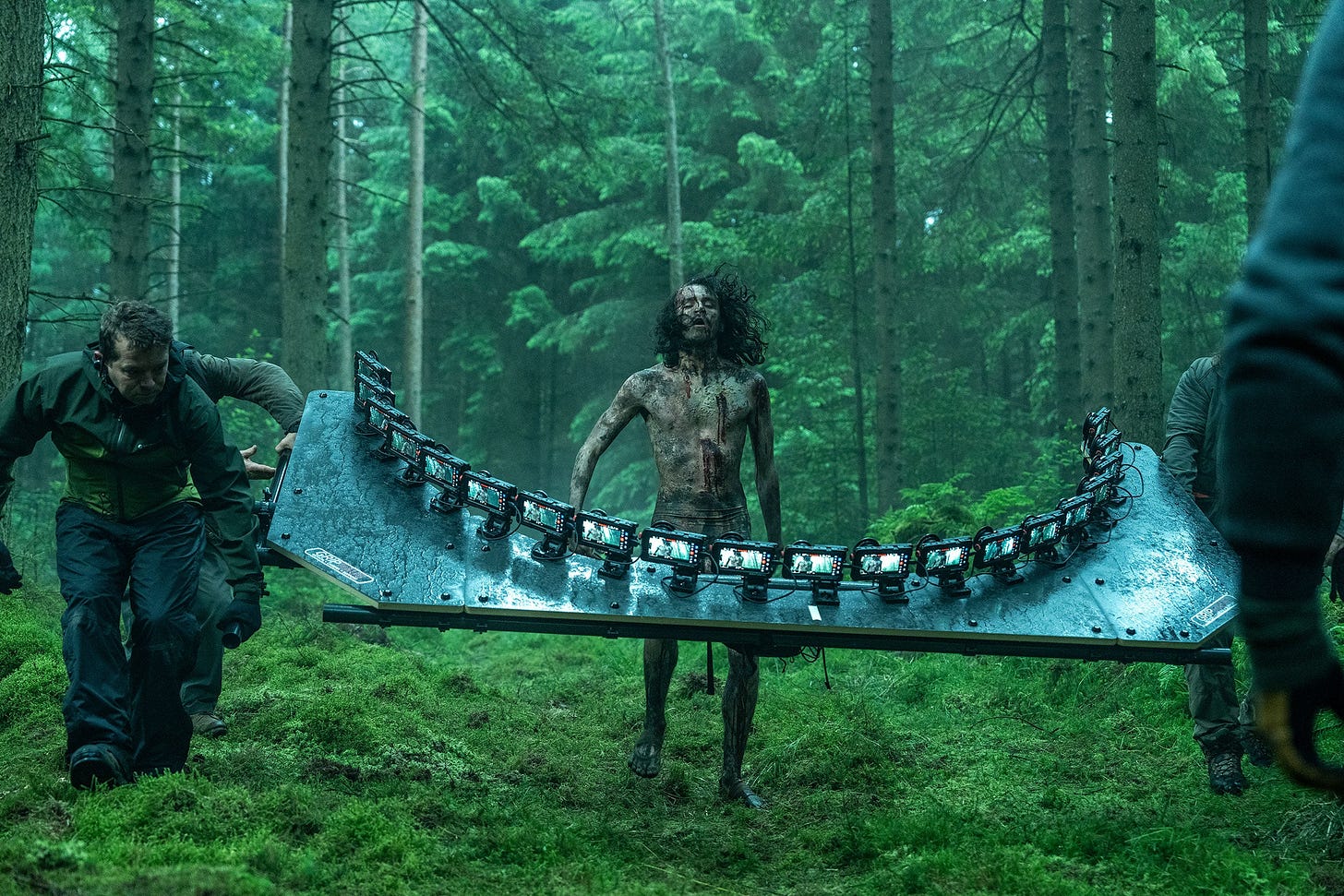
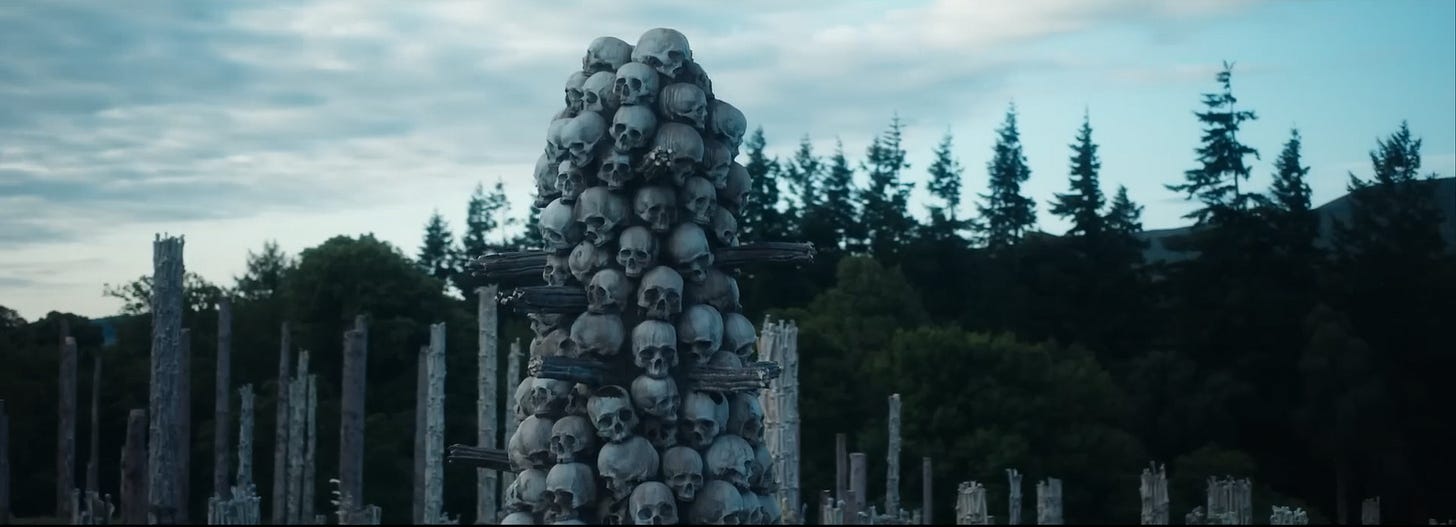
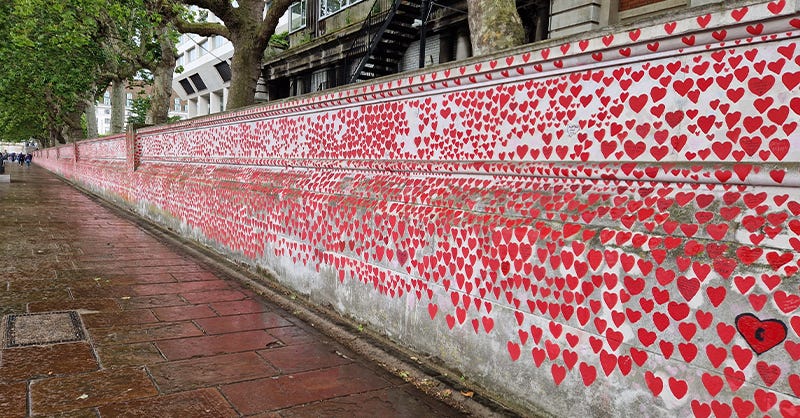
Hey, I’ve started an account where I collect some out of context captions of great films in cinema history. Just wanted to share it with the cinephiles around here : https://substack.com/@pariscinema?r=1x6h4r&utm_medium=ios&utm_source=profile